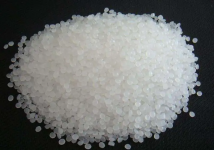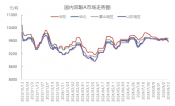read: 464 time:2025-07-16 16:30:08 from:化易天下
When working with various chemicals, one common question that often arises is: will acetone melt plastic? Acetone, a powerful solvent, is known for its wide range of applications, from cleaning to industrial use. However, its interaction with plastics can be complex and varies depending on the type of plastic. This article will explore the science behind acetone's effects on different plastics, helping you understand when and why acetone might cause plastic to melt or degrade.
Acetone, chemically known as propanone, is a colorless, volatile liquid with a strong odor. It is widely used in laboratories, industries, and even in household products like nail polish removers. The reason acetone is so effective as a solvent is due to its polar nature, which allows it to dissolve many organic compounds, including certain plastics. But does this mean acetone will melt plastic? The answer depends on the specific type of plastic in question.
Plastics are a broad category of synthetic materials made from polymers. Different types of plastics have different chemical structures, which influence how they react to solvents like acetone. Here are some common plastics and their typical reactions to acetone:
Polystyrene (PS): This is one of the most common plastics that will melt when exposed to acetone. Polystyrene, used in products like foam cups and insulation, is highly susceptible to acetone. The solvent breaks down the polymer chains, leading to a dissolution or melting effect.
Polyvinyl Chloride (PVC): PVC is another type of plastic that can be softened or deformed by acetone, though it may not completely melt. Acetone causes the surface of PVC to swell and become more flexible, which can lead to damage over time.
Polyethylene (PE) and Polypropylene (PP): These are commonly used in containers and packaging. Both are resistant to acetone, meaning that exposure to this solvent will generally not melt or significantly damage these plastics.
Acrylic (PMMA): Acrylic plastics, often used in clear sheets for windows or displays, can be damaged by acetone. While it might not completely melt the plastic, acetone can cause the surface to become cloudy or brittle.
To answer the question, "will acetone melt plastic?"—the reason lies in the interaction between acetone and the polymer chains that make up the plastic. When acetone comes into contact with certain plastics, it can break down the intermolecular forces that hold the polymer chains together. This results in the plastic softening, swelling, or even dissolving completely. The extent of this effect depends on the plastic's chemical composition and its resistance to solvents.
Understanding which plastics are vulnerable to acetone is crucial for both safety and practical applications. For example, using acetone to clean a plastic surface without knowing its compatibility can lead to unintentional damage. If you are working in an environment where acetone is used, it's essential to know the types of plastics that are present to avoid accidents.
When storing or handling acetone, it’s advisable to use containers made from resistant materials like glass or certain metals, rather than plastic containers, unless you are sure of the plastic’s compatibility with acetone.
In summary, the question "will acetone melt plastic?" does not have a straightforward yes or no answer. The effect of acetone on plastic depends on the type of plastic in question. While acetone will certainly melt or deform plastics like polystyrene and PVC, it has little to no effect on others like polyethylene and polypropylene. Knowing the chemical properties of both the solvent and the plastic is essential for ensuring safe and effective use.
By understanding these interactions, you can better anticipate the outcomes when using acetone around plastics, avoiding potential damage and ensuring the safety of your materials and equipment.

Jincheng Petrochemical's 300000 ton polypropylene plant successfully trial production, 2024 polypropylene market analysis

The ABS market remains sluggish, what is the future direction?

Market differentiation of bisphenol A intensifies: prices rise in East China, while prices generally decline in other regions

The production method and process flow of silicone acrylic lotion, and what are the common raw materials